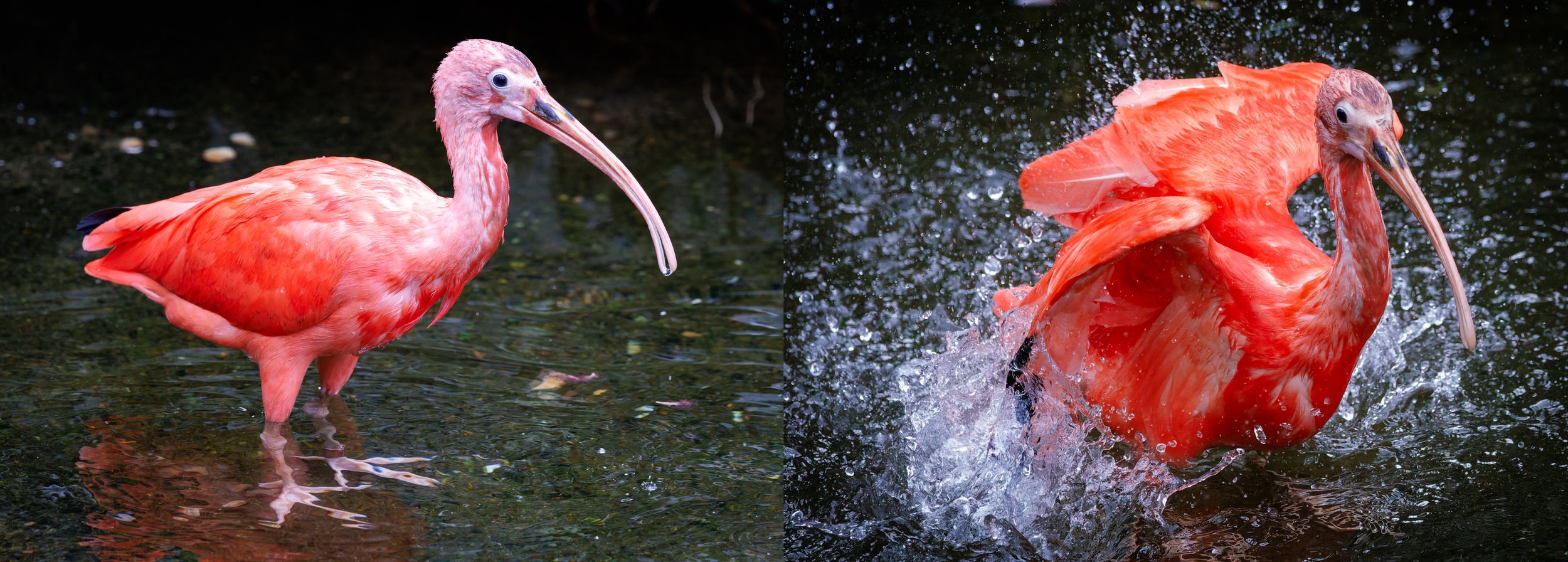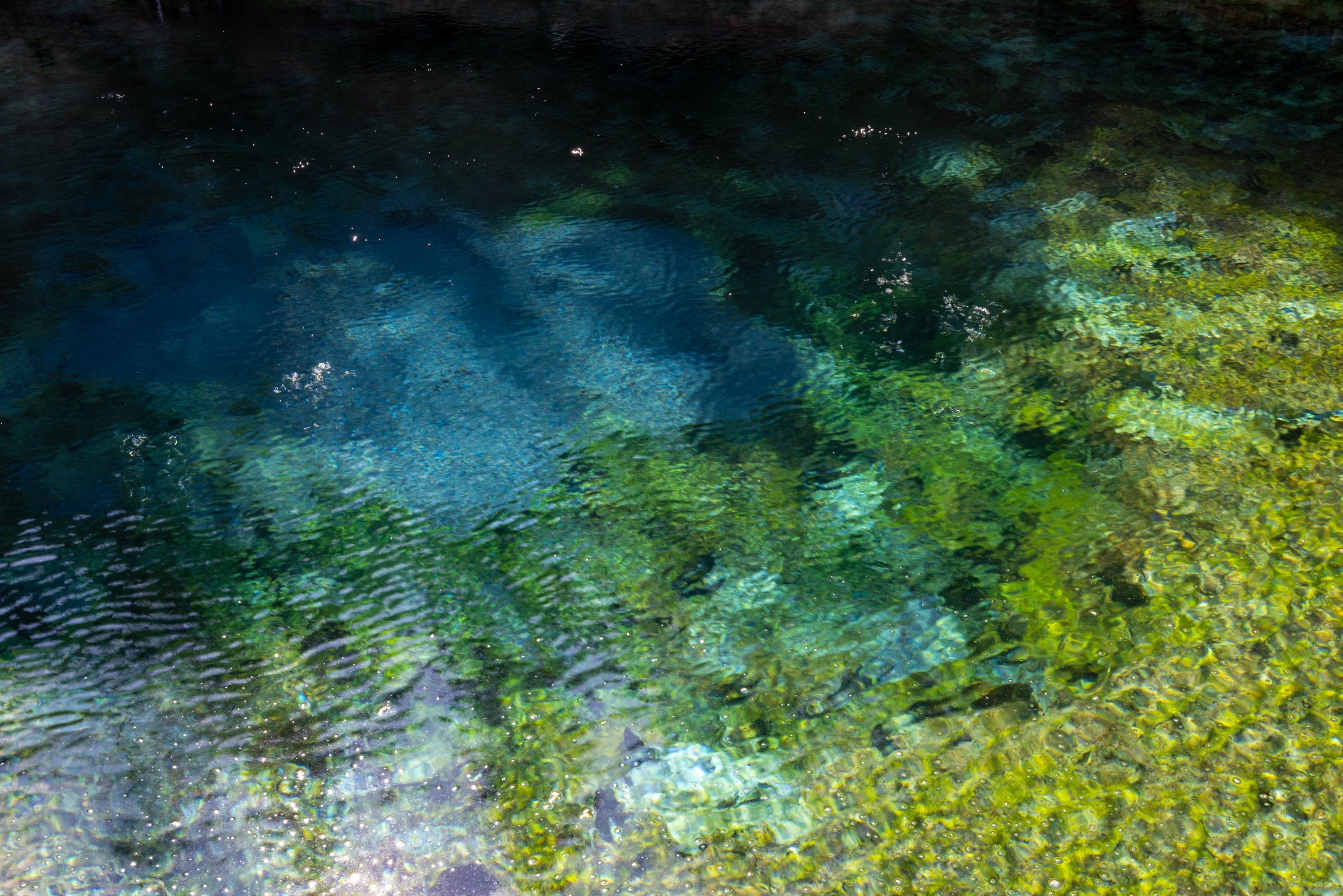Blog
National Aviary
A photographic trip through Pittsburgh’s National Aviary.
Six minute read & view:
Birds from around the world
A 24-hour journey to my birth town, Pittsburgh, Pennsylvania
And an unusually colored squirrel
(What I believe is) A leucistic Eastern Gray Squirrel on the grounds of Allegheny Commons Park, Pittsburgh, PA | 253mm, 1/250s, f/5.0, ISO 500
On the 51st anniversary of The Immaculate Reception, my friend David and I took a jaunt to Acrisure Stadium in Pittsburgh, PA for what would become a Steelers win! with Mason Rudolph as QB no less against the Cincinnati Bengals. It was December 23, 2023. That was a great experience for one Steelers fan (and the Raiders fan with me, question mark) and was my first time attending a game since my mom was pregnant with me in fall 1975 when at the venerable Three Rivers Stadium. Apparently the stadium that would be imploded in 2001 was only five and a half years old at the time…
That morning we had time for sightseeing downtown. So we went to Pittsburgh’s Northside and visited the National Aviary, located in Allegheny Commons Park. This very cool place provides an opportunity to see and photograph over 150 species of birds. The official website notes they are “America’s only independent indoor nonprofit zoo dedicated to birds”. The honorary “National” status was enacted into law by United States Congress in 1993, and Wikipedia also tells us this is the largest aviary in the US.
Not actual Love Birds, rather two Saipan White-Eye (Zosterops saypani). Conservation Status NT | 300mm, 1/400s, f/5.6, ISO 4000
The Aviary has several indoor and outdoor habitats, most of which are viewed from inside. The indoor rooms are conditioned to approximate tropical climate and you enter through a controlled vestibule to prevent bird escape. Once in, the birds are swimming, flying, perching, and in some cases, walking around you. The rooms seemed to vary mostly by size, light level, and whether they have water pools or not. We first visited Grasslands with its many finch- to robin-sized tree perching birds. Other than a couple of single species areas, like the outdoor Eurasian Eagle-Owl and Sea Eagle enclosures, my layman’s assessment is each habitat contains birds ranging from common to rare with native habitats from the United States to South America, Australasia, and Asia. In the Wetlands, where we spent the most time, it was a bit funny to see native Hooded Mergansers, Mallard, and a Brown Pelican (who I understand had been injured and is unable to be released) alongside brightly colored birds like Scarlet Ibis, Blue-bellied Roller, and Venezuelan Troupial.
One guide told me some birds have to be relocated occassionaly to a different room if they don’t get along with another. It got me thinking about what were the designed differences in each room, and how specific are the habitat and food requirements for the different species. But it was very cool to see them all together and be among them, if not while tolerating the Hyacinth Macaw’s constant and very loud screeching. As a photographer, it did feel slightly like shooting fish in a barrel, but it was a great opportunity to see species I will otherwise never get to as well as remove one or two variables surrounding distance and perspective out of the equation which are among the biggest challenges regularly faced.
Bubba, a 26-year old Palm Cockatoo (Probosciger aterrimus) looking very stoic. He reminds me of Sam the Eagle. Conservation Status NT | 472mm, 1/400s, f/7.1, ISO 12800
A Giant Eurasian Owl (Bubo bubo) napping. He was huge! | 270mm, 1/640s, f/5.6, iso 3200
An American Flamingo (Phoenicopterus ruber) in its distinctive orange-pink plumage and unipedal stance. Conservation Status LC | 238mm, 1/1250s, f/5.0 ISO 2500
This vibrantly colored (and aptly named) Superb Starling (Lamprotornis superbus) was captivated by the lens reflection. | 343mm, 1/500s, f/5.6, ISO 12800
A beautiful and royal-looking Victoria Crowned Pigeon (Goura victoria). Conservation Status NT | 223mm, 1/400s, f/5.0, iso 10000
A bird trip wouldn’t be complete without herons. These are Boat-billed Herons (Cochlearius cochlearius). | 109mm, 1/400s, f/7.1, iso 5000
A Scissor-tailed Flycatcher (Tyrannus forficatus) | 343mm, 1/640s, f/5.6, iso 4000
One of many mustachiod-looking Inca Terns (Larosterna inca). They enjoy splashing and chasing around the water hole. | 500mm, 1/400s, f/7.1, iso 10000
A Scarlet Ibis (Eudocimus ruber) poses, and then takes a bath. His color seems to match the flamingo’s! | (right photo) 238mm, 1/3200s, f/5.0, iso 10000
This Venezuelan Troupial (Icterus icterus) is related to the Oriole, as its’ colors suggest, and are nest pirates. | 500mm, 1/500s, f/7.1, iso 800
The semi-ubiquitous Snowy Egret (Egretta thulapani) having a good, or bad, hair day. Conservation Status LC | 400mm, 1/500s, f/7.1, ISO 5000
A pair of White-throated Bee-eaters (Merops albicollis) nestle on a branch. This an African native species. | 324mm, 1/640s, f/5.6, iso 1000
A diminutive African Pygmy Goose (Nettapus auritus) preening vigorously. | 324mm, 1/400s, f/5.6, iso 10000
A Toco Toucan (Ramphastos toco). I can’t imagine having a long bill to eat my fruit with. | 100mm, 1/640s, f/5.0, iso 3200
One of a pair of Steller’s Sea Eagles (Haliaeetus pelagicus). The beak halo is due to being photographed through glass. | 254mm, 1/640s, f/5.0, iso 2500
A striking Shaft-tailed Finch (Poephila acuticauda), an Australian species. | 343mm, 1/640s, f/5.6, iso 1250
This Blue-bellied Roller (Coracias cyanogaster) seemed to be posing, from Africa. | 428mm, 1/400s, f/6.3, iso 2000
A brightly colored Red Sisken (Spinus cucullatus) in the Grassland habitat. | 400mm, 1/400s, f/6.3, iso 1250
One of two Hyacinth Macaw (Anodorhynchus hyacinthinus), the largest macaw species. They were loud! | 254mm, 1/320s, f/5.0, iso 6400
May you have a fantastic 2024 with many travel - photography - animal adventures!
Music used to create this post: Memphis, Tennessee (Roy Orbison), Une année sans lumière (Arcade Fire), Last Goodbye (Jeff Buckley), Faith I Do Believe (Rusted Root, Pittsburgh’s most famous band?), Delicate (Taylor Swift), Emily I’m Sorry (boygenius).
Epiphany
Exploration of Alberta, Canada’s Rockies and largest city Calgary.
Seven minute read:
The Canadian Rockies
Lake and waterfall galore
Wildlife
The journey begins with a series of fortunate events
View of Banff from Sulphur Mountain at golden hour | composite, 21mm, 1/100s, f/11, iso 125
299 Miles: Glacier to Calgary
Kalispell, Montana | 48°18'27.0"N 114°15'12.2"W
The few lights of the border crossing at Roosville disappeared in the mirror of our 4Runner rental just after midnight. Since landing at FCA – Glacier International Airport in Kalispell Montana - one hour before and traversing into Alberta, CA we focused on finding somewhere to stay.
Final approach to FCA airport (Glacier Park International, Montana) marks the start of a Canadian Rockies trip | Google Pixel 7 Pro
Surprise number 1.
Thirty minutes earlier – before complete darkness occurred about 11 pm - I had seen a moose with her two calves grazing on the roadside. I had never seen moose before, but it was on the bucket list. My expectations of seeing one over the next 10 days had been both sanguine and restrained, so I left feeling energized. This was a positive omen for our trip.
A wildfire hotspot on the hill west of Sparwood | Google Pixel 7 Pro
Surprise number 2.
At 1 am, while passing through the village of Sparwood, we saw hotspots of forest fire on the east facing slopes to our left, about a kilometer away. Not raging infernos as I had imagined from the regular reports of Canadian fires earlier in the summer, but quiet, amorphous red-orange flickering blobs. It was difficult to understand the scale because of the distance and darkness. There were fire fighting vehicles on the service road where I pulled off to try to get a cell phone photo. This time it felt eerie and foreboding, the total opposite of before.
Around 2 am, having being told at a dozen motels ‘no vacancy’ – for reasons we could not figure – we decided to keep on trucking to our reserved room in Calgary. That was a vestige of our original travel plans just 48 hours earlier before I realized Kate’s passport had recently expired. To make our journey to Banff and Jasper happen we would have to drive across the boundary with two passports and one birth certificate.
I awoke to this pre-dawn view of the Aurora Borealis from the Cowboy Trail | Google Pixel 7 Pro
Surprise number 3.
Around 2:30 am, thoroughly exhausted, we pulled onto a pull-off lane of Highway 22 “Cowboy Trail” northbound to take a nap. With the engine and lights off the air was utterly still and totally dark. At 3:15 I woke to the high speed woosh of a passing truck, still tired but after several minutes, awake and feeling refreshed enough to continue. Then I looked up for the first time, thinking I saw the first signs of dawn on the horizon. But after rubbing my eyes thoroughly and a moment of confusion, realized it was not astronomical twilight before us, but the northern lights. This time I felt exhilaration. I had no expectation for seeing the Northern Lights in 2023. Our latitude was a lowly 49°52'. But the time and the conditions of the magnetosphere that particular day proved to be serendipitous.
Calgary
Calgary, Alberta | 51°02'41.2"N 114°03'11.3"W
Kate uses her first SLR camera at Calgary’s National Music Centre museum (aka Studio Belle) | 14mm, 1/80s, f/7.1, iso 100
Moraine Lake
Banff National Park | 51.3217° N 116.1860° W
Mid-morning light drapes across the peaks east of Moraine Lake | 30mm, 1/80s, f/14, iso 160
The turquoise water of Moraine Lake viewed from The Rockpile | 23mm, 1/100s, f/10, iso 100
Canoers on Moraine Lake | 472mm, 1/400s, f/10, iso 320
An American Pika (Ochotona princeps) smiles for the camera | 500mm, 1/1000s, f/7.1, iso 320

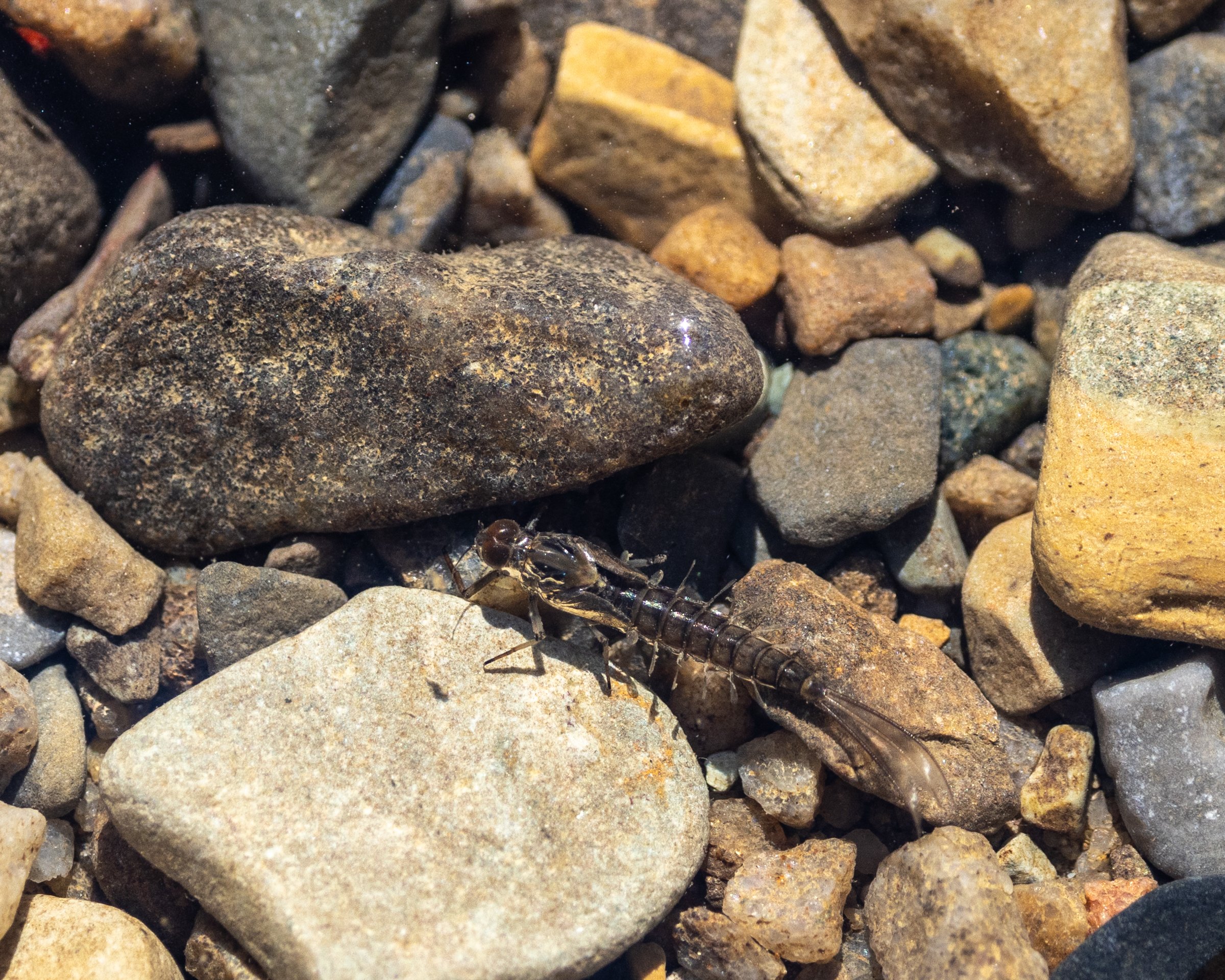

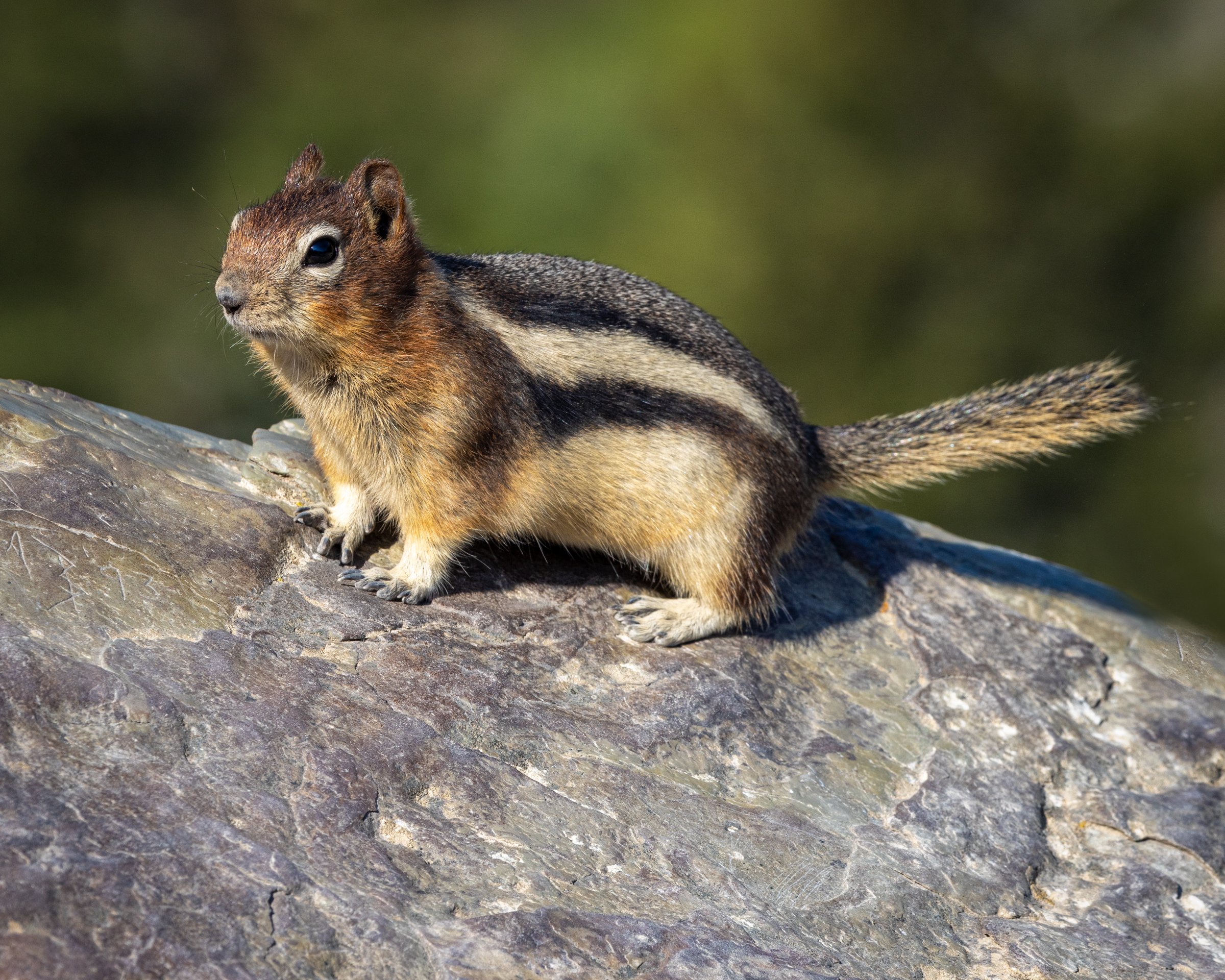




Mount Edith Cavell
Jasper National Park | 52°40'06.0"N 118°03'24.0"W
Ancient layers of ice and glacial till rise beyond Cavell Pond | 100mm, 1/100s, f/9.0, iso 100
The trailhead seat and sign | 23mm, 1/80s, f/6.3, iso 100
Green lichens (living) and gray (dead) cover the rock outcrops throughout the meadows | 500mm, 1/125s, f/7.1, iso 100
Angel Glacier and Mount Edith Cavell | composite, 23mm, 1/50s, f/14, iso 100




Ice, abstracted | 472mm, 1/250s, f/9.0, iso 100


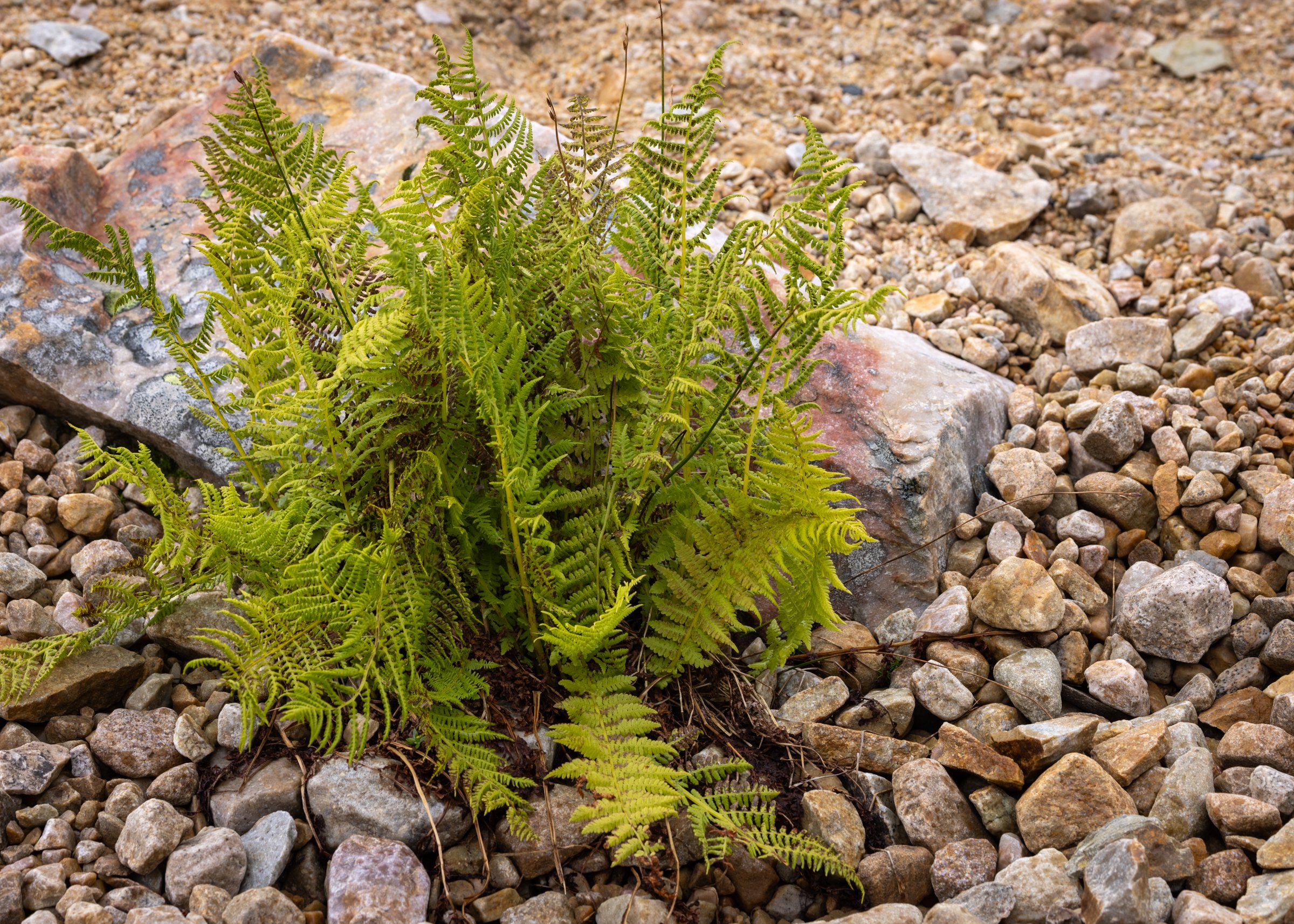
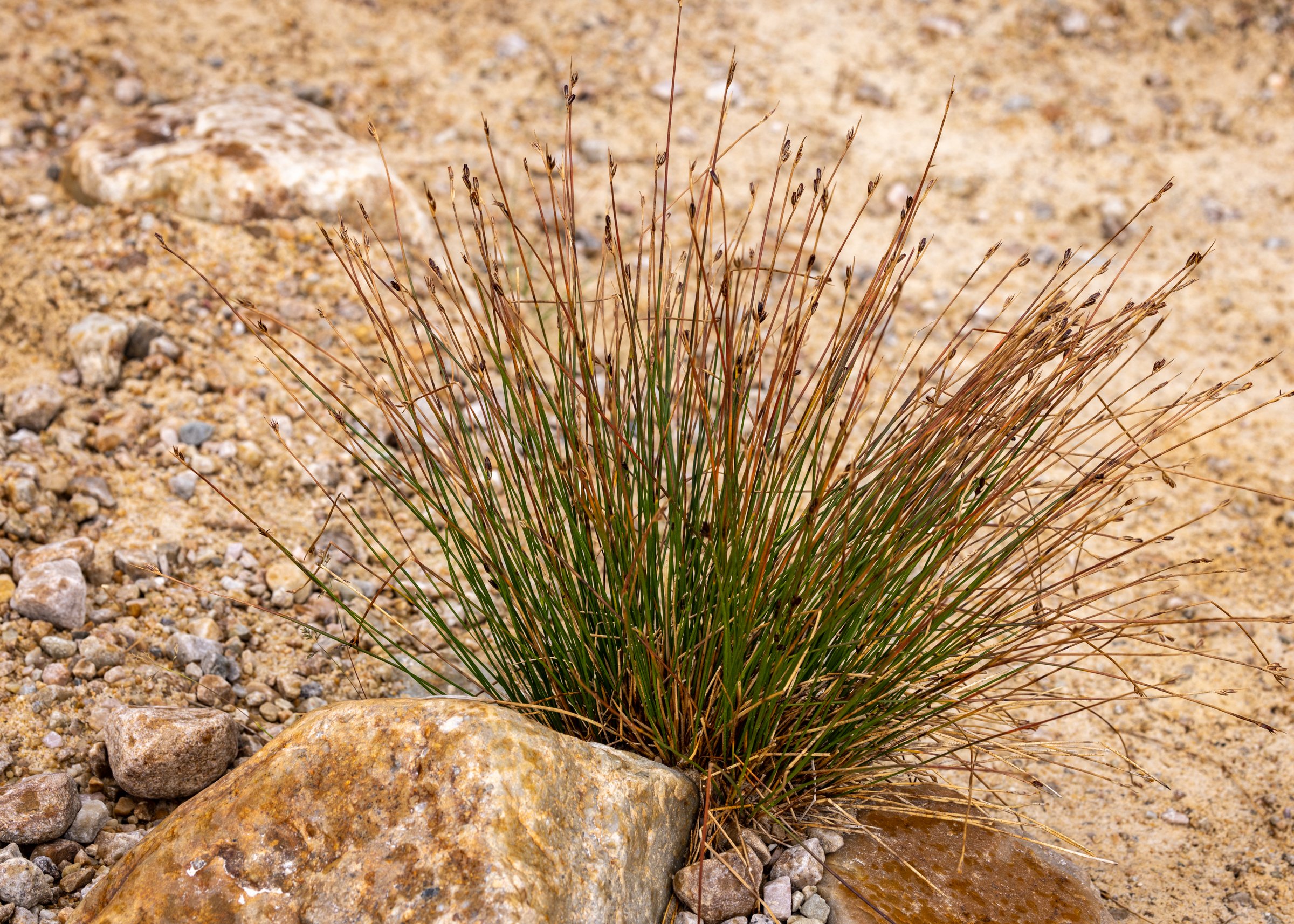
Mistaya Canyon
Icefields Parkway | 51°57'01.0"N 116°43'00.0"W
The Mistaya torrent rushes through narrow canyon walls toward the North Saskatchewan River | 35mm, 1/20s, f/13, iso 100
A subalpine forest of Douglas Fir (Pseudotsuga menziesii) | 42mm, 1/40s, f/9.0, iso 160



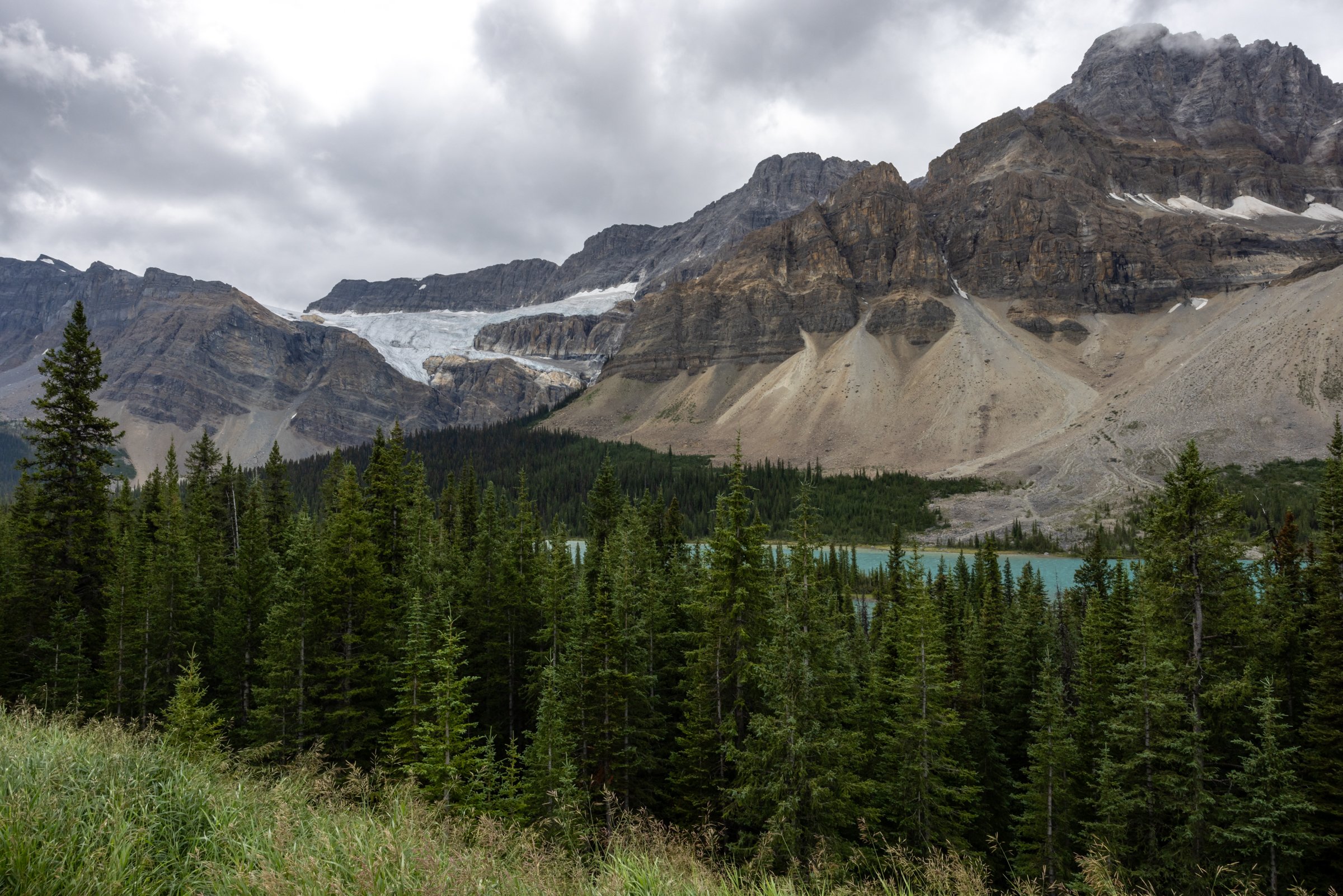




A Columbian Ground Squirrel standing sentry next to his burrow beneath a picnic shelter (Urocitellus columbianus) | 472mm, 1/1000s, f/7.1, iso 5000
Lake Louise
Banff National Park | 51°24'42.0"N 116°13'41.0"W
Lake Louise is a magnet for activity at sunset | 23mm, 1/25s, f/22, iso 100

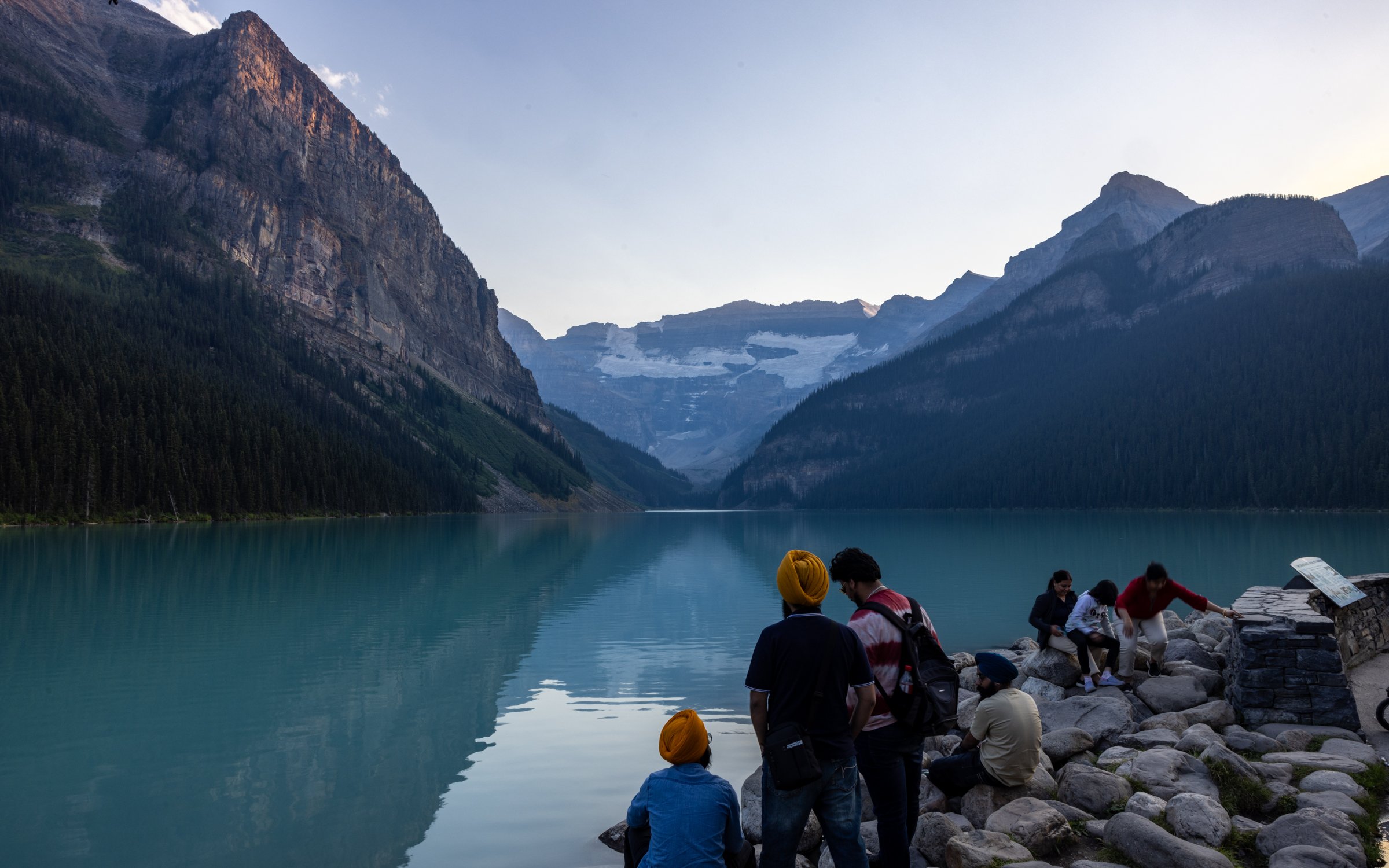
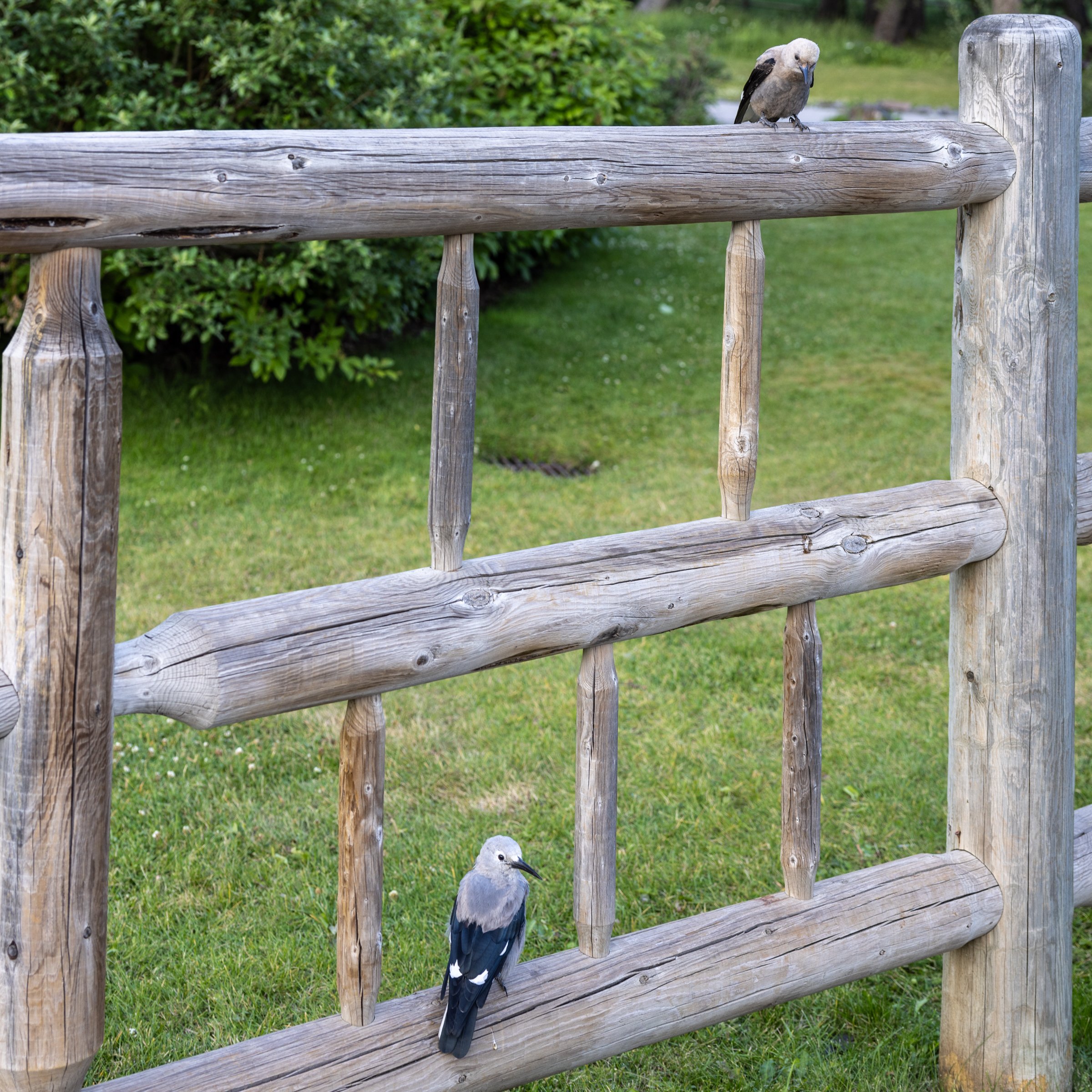
Dining at the Fairmont Lake Louise | Google Pixel 7 Pro
A cantilevered trail through nearby Johnston Canyon | 31mm, 1/30s, f/13, iso 100
Moss in the tree canopy | 254mm, 1/40s, f/8.0, iso 100
Banff
Banff National Park | 51°09'53.1"N 115°33'46.7"W
Photo op in the Cascade of Time Garden with downtown Banff in the background | 25mm, 1/320s, f/8.0, iso 320
Gondolas arrive at the summit of Sulphur Mountain above Banff | 27mm, 1/80s, f/9.0, iso 200
O Canada | 25mm, 1/100s, f/10, iso 100
Brown and Black Bears are not uncommon in the Canadian Rockies | 35mm, 1/80s, f/4.0, iso 100
Orange lichens adorn a white rock at Cave and Basin National Historic Site | 19mm, 1/20s, f/4.0, iso 1000
A sulfurous pool at Cave and Basin National Historic Site in Banff | 19mm, 1/10s, f/4.0, iso 2500
Rotten eggs were on the menu at this hot spring | 35mm, 1/25s, f/20, iso 100
Park Canada distance signage | 123mm, 1/320s, f/8.0, iso 100
Canoers on Lake Minnewanka | 100mm, 1/500s, f/10, iso 160
Hotel view | Google Pixel 7 Pro
Jasper
Jasper National Park | 52°53'09.1"N 118°03'27.2"W
An American Crow (Corvus brachyrhynchos) among elderberry (Sambucus canadensis) foliage | 451mm, 1/250s, f/7.1, iso 100
Pyramid Mountain as seen from a group canoe, Lake Beauvert at Fairmont Jasper Park | Google Pixel 7 Pro
Horseback riding through a birch grove | Google Pixel 7 Pro
Rounded river stones in a point bar of the Athabasca River | 35mm, 1/50s, f/10, iso 100
Athabasca Falls | 14mm, 1/50s, f/20, iso 100
Horseshoe Lake, one of many stops along Icefields Parkway | 25mm, 1/100s, f/14, iso 100
Peyto Lake in late afternoon | 22mm, 1/100s, f/16, iso 100
Music used to create this post: Black Muddy River (DeYarmond Edison), Scott Street (Phoebe Bridgers), So Now You Know (The Horrors), Jetstream (Doves), Wish You Were Here (Pink Floyd)








